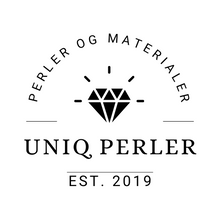Zircon Vs Zirkonia: Your Guide to Distinguishing the Two Sparkling Stones
Have you ever stood and scratched your head over what the difference really is between a Zircon and Cubic Zirconia? The two types of stone have (almost) the same name and, confusingly, look incredibly similar.
It is not a surprise that you can get a little confused about what is what. But you know what? They are actually incredibly different and it's all in the details. So stick around as I dive into the details of these two beautiful stones and help you learn what the difference really is between Zircon and Cubic Zirconia.
Zircon: Nature's Shiny Mineral
What is zircon made of?
Zircon is a natural beauty created by the earth itself. The rock consists of zirconium silicate (ZrSiO4), and you often find it in cooled, solidified magma and metamorphic rocks.
Zircon comes in a multitude of colors
This gemstone comes in all sorts of shades—brown, yellow, green, blue, and even clear. Some of the zircons that you can come across today have been heat treated to make the colors in the stone pop even more, so that the stone appears more beautiful.
How hard is a zircon?
On the Mohs hardness scale, Zircon scores between 6.5 and 7.5. In general, zircons are described as being quite robust, but you still have to be a little careful; it can chip or scratch if you are too hard on it.
The beautiful shine of zircons
Where you find the real difference between cubic zirconia and a real zircon is the zircon's incredible shine. Thanks to its high refractive index, zircons often appear very shiny and can in some cases give even a diamond a fight to the line.
How much does Zircon cost?
Zircon is not always the cheap alternative. Of cubic zirconia and zircon, it is most often zircons that are the expensive choice. BUT, a high quality Zircon is not a cheap stone to acquire, especially the blue and colorless varieties, depending on the quality, can be some of the more expensive gemstones if you have to get hold of them.
How do you know it's a zircon
How do you know that it is a zircon you are dealing with versus cubic zirconia? Check the shine of the stone. A natural Zircon will have a unique brilliance and refraction of the light. And should you have a jeweler's loupe on you, you can take a look at the stone and see the natural inclusions or small irregularities that a zircon contains — this is a sign of its natural origin.
Cubic Zirconia: The Genius From the Laboratory
What Is Cubic Zirconia Made Of?
Cubic zirconia, or CZ as it is called for short, is a laboratory-created stone made of zirconium dioxide (ZrO2). And you read that right here. Yes, it is man-made!
What colors are Cubic Zirconia available in?
Cubic zirconia is normally colorless, but since the stone is man-made, the stone can be made with exactly the color you want. These stones are often seen in a rainbow of hues.
How Hard Is Cubic Zirconia?
Cubic Zirconia is a hard stone that scores 8 to 8.5 on the Mohs scale. It is a good choice for those of you who wear jewelery on a daily basis and who would like your jewelery and stones to be resistant to scratches and chips.
How is the shine on the stone?
Although Zirconia also has a high refractive index, it does not quite match the natural brilliance of Zirconia.
The Affordable Stone
Cubic zirconia is your go-to if you're looking for something that won't break the bank. It is a popular and affordable alternative to diamonds and natural zircon.
How Do You Spot Cubic Zirconia?
Cubic zirconia is almost always flawless, thanks to its laboratory origins. If one day you find yourself with a precious stone in your hand and it looks a little too perfect and at the same time it has an affordable price, then you are at best a CZ stone
Last word..
Whether you are a Zircon enthusiast or a Cubic Zirconia fan, knowing the difference between the two can make your gemstone shopping trip a little easier. Each has its own charm and advantages. In the end, it comes down to which stone you personally feel is the right match for your jewelry.
Hope this guide has made you just a little smarter.
